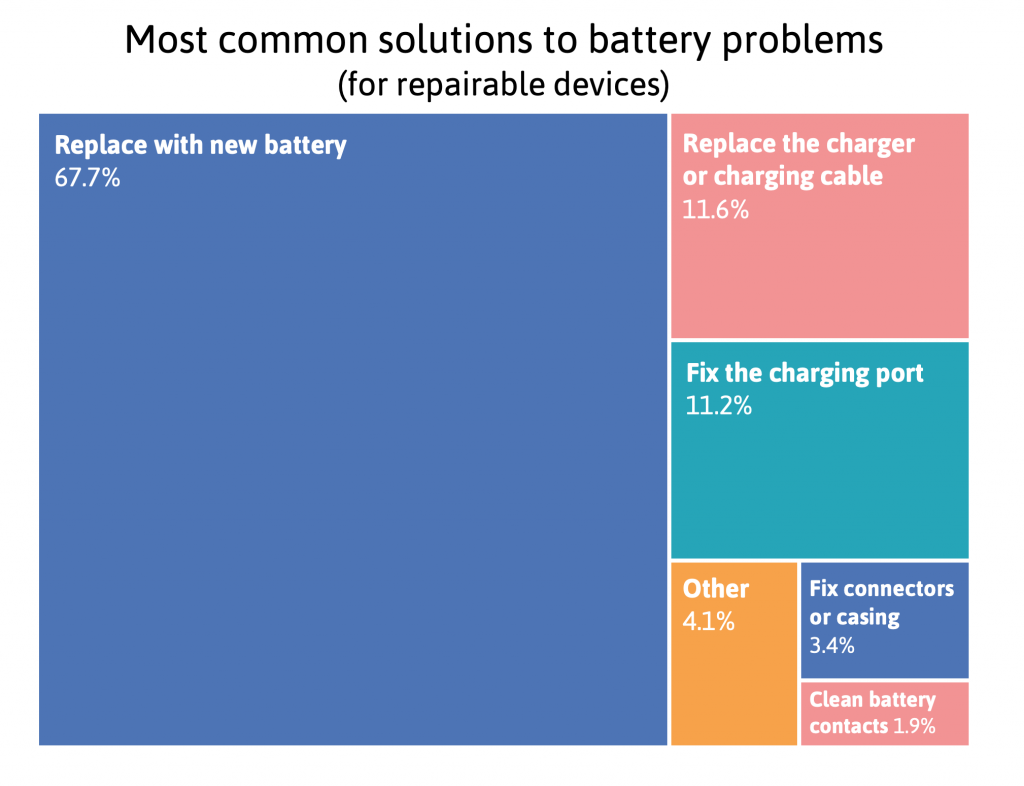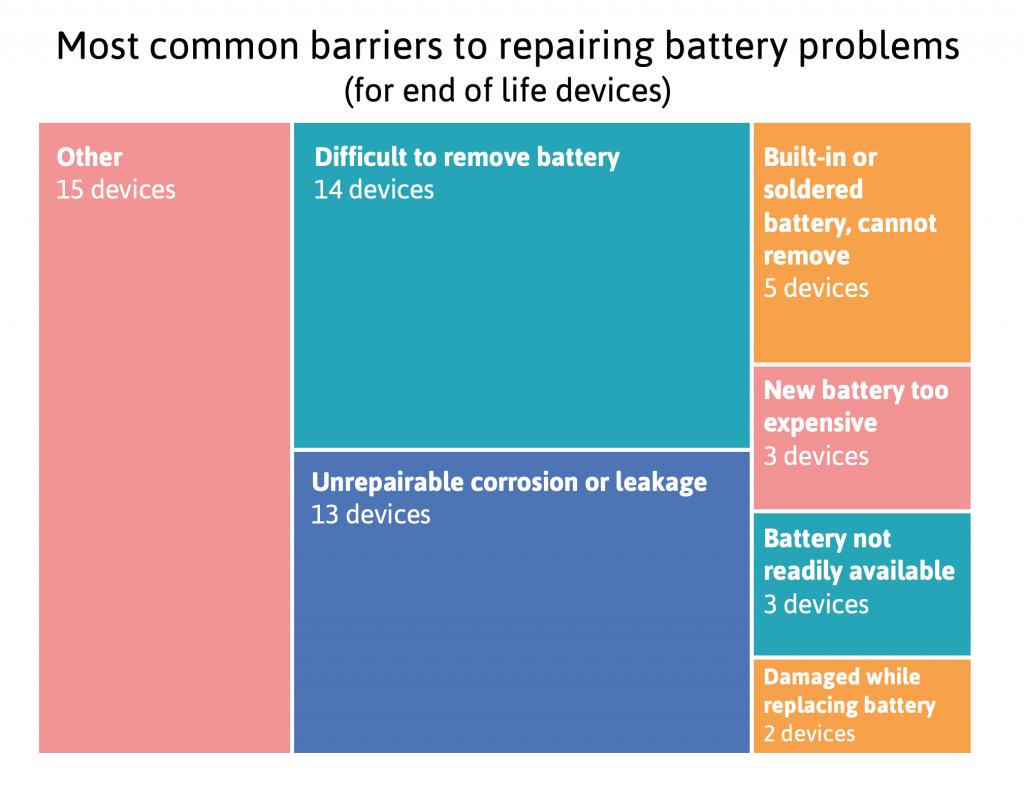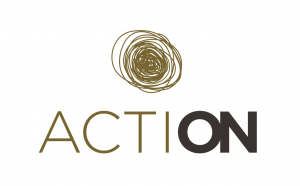What are the main barriers to repairing battery-related problems?
To answer this question we analysed data from unsuccessful repairs involving batteries at community repair events, as submitted by Open Repair Alliance partners. We analysed data from 1000 repair attempts, 51% of all repair attempts indicating battery-related issues in the problem description – this meaning that 49% of such repairs (944) were successful. Our data shows the extent of the problem, and how it affects products in all kinds of categories seen at community events. We split the analysis into 2 sets of records: those that were deemed repairable, and those that were deemed end of life. The results below exclude records for which the repair information provided was not sufficient to categorise the exact fault experienced.
Repairable battery-related faults
Unsurprisingly, the most common next step required to complete battery-related repairs is access to replacement batteries (67.7%). The high frequency of such incomplete repairs at community repair events supports the need for wide availability of high quality replacement batteries as well as ease of disassembly of all consumer devices, to reduce cases of devices discarded when a new battery was the only spare needed. We are not concerned about the availability of spare charging cords or chargers (11.6%). However, more attention needs to be given to making repair and/or replacement of charging ports (11.2% of cases) easy to perform in all devices, as well as replacing casing or connectors (3.4%).
Experienced barriers preventing repair in end-of-life devices
The results from our analysis confirm the range of most common barriers experienced by consumers as well as independent repairers when attempting to replace a battery: difficulty in removing the battery, batteries that can’t be removed at all, expensive batteries, unavailable batteries, devices further damaged while attempting a battery replacement. The cases analysed refer to devices which were then disposed of as a result of a failed attempt to fix them. The failed attempts linked to corrosion or leaked content from the batteries can be due to poor quality of the battery or to the amount of time waited before replacing the battery. Irrespective of this, all barriers could be removed with changes in legislation.
The European Union is currently investigating new legislation aiming to improve the environmental performance of batteries and products containing batteries. One aspect being considered is a removability and replaceability clause: ensuring that all products come with a removable and user-replaceable battery. We think this is important from the perspective of repairing products. The insights we share help make the case for improved battery serviceability of all devices.


Where does the data come from?
Open Repair Alliance partner The Restart Project facilitated an online microtasking quest – BattCat – where volunteer participants looked at Open Repair Alliance data on about 1000 repair attempts pertaining to batteries recorded at community events. The aim of these quests was to sort the records into buckets of either next steps required, or barriers to repair, depending on whether the repair item had been deemed repairable or end-of-life.
Community repair events are busy with volunteers concentrating their efforts on the people and the devices that turn up. The data that gets recorded by a fixer is their description of the situation at the time. Microtask participants would read this “problem” text and judge whether it fitted any of the next steps or barriers to repair that were presented. Based on consensus of these opinions, the outcomes for the devices were assigned.
The data started as 1000 records from a filtering of the 2020-09 ORA data for records where the “problem” statement related to batteries and the repair status was ‘Repairable’ or ‘End-of-life’. The filter included records where the problem statement when translated from Google Translate contained ‘battery’ or ‘batteri’. Further filtering removed records where the problem statement contained only the word for ‘battery’ or ‘batteries’ in the source language. The resulting 1000 records were included in the BattCat quest. 995 of these records received a winning value for next step or barrier during the BattCat quest – that is, the value received either a majority of 2 out of a possible 3 opinions from quest participants, or received ‘split opinions’ which were subsequently adjudicated by members of the Restart team. Records that did not receive enough opinions for either a majority or adjudication at the time that the BattCat quest closed are not included. 366 records received a value of ‘Poor data’, meaning a useful value could not be determined from the problem statement.
The list of available values for next steps and barriers to repair can be viewed here: https://github.com/openrepair/data/blob/master/quests/batteries/battcat_step_barrier.csv.
Download the BattCat data
You can download the data from BattCat here: https://github.com/openrepair/data/tree/master/quests/batteries.
The full Open Repair Alliance dataset is available here.
Support for this work

We are hugely grateful to to The ACTION (Participatory science toolkit against pollution) project for funding this work and for their support.

This project has received funding from the European Union’s Horizon 2020 research and innovation programme under grant agreement No 824603.
This blog post reflects the author’s views. The European Commission is not liable for any use that may be made of the information contained therein.